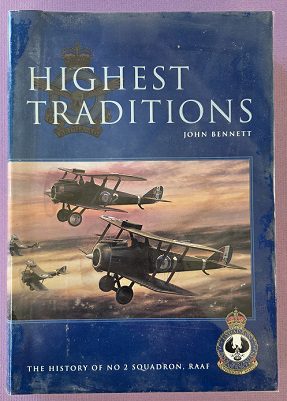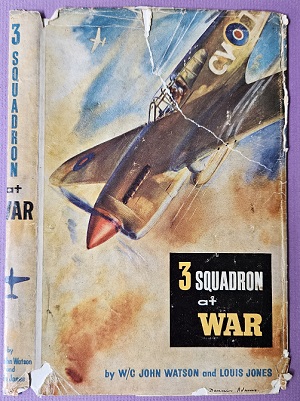Description
Title: Seek and Strike, 75 Squadron RAAF, 1942 – 2002
Author: Wilson, David
Condition: Mint
Edition: 1st Edition
Publication Date: 2002
ISBN: 9781875593231
Cover: Hard Cover with Dust Jacket – 229 pages
Comments: The history of 75 Squadron RAAF from 1942 to 2002.
75 Squadron was formed at Townsville, Queensland, on 4 March 1942, under the command of Squadron Leader Peter Jeffery. On 21 March the squadron’s first four Kittyhawk aircraft landed at the Seven Mile Strip, Port Moresby. During the afternoon Flying Officer Barry Cox and Flight Lieutenant John Piper shot down a Japanese reconnaissance aircraft. Two hours later Squadron Leader J.F. Jackson, the newly appointed commanding officer, led the remainder of the squadron to the Seven Mile Strip.
The squadron was the sole fighter defence of Port Moresby during its 44-day deployment from 21 March to 3 May 1942. Thirty-nine enemy aircraft had been destroyed in the air or on the ground, and 54 damaged, for the loss of 12 pilots and 24 aircraft.
The squadron returned to Townsville, and then moved to Kingaroy and Lowood to complete re-equipment and recuperation. Aircrew strength was supplemented by pilots who had seen service with Spitfire squadrons over Europe.
On 21 July 1942 the squadron flew to Gurney Field, Milne Bay, where it operated with 76 Squadron in the defence of Milne Bay. Milne Bay was being developed to protect the left flank of Port Moresby and to enable the Allies to project air power over the north coast of New Guinea and the Louisiade Islands.
On 24 August 1942 a Japanese force was sighted heading for Milne Bay. On the same day, the two squadrons fought Japanese raiders, claiming three enemy aircraft for the loss of three pilots. The Japanese troops landed in the early hours of 25 August and, in the ensuing Battle for Milne Bay to 3 September, the squadrons strafed Japanese troops, barges, and stores. Lieutenant General Sydney Rowell, the commander of New Guinea Force, noted in his report that the effort of the fighter squadrons was “the decisive factor” in the ultimate victory over the invading forces.
After the victory at Milne Bay, the squadron withdrew in September 1942 to Horn Island and Cairns, before returning to Milne Bay in January 1943, from where patrols were flown over the bay and Goodenough Island. In July 1943, in its last large air-to-air operation of the war, five enemy aircraft were shot down.
Thereafter, the squadron was deployed to operate from numerous bases. From Goodenough Island dive-bombing strikes were carried out on Gasmata, New Britain. At Nadzab the squadron flew close escort missions for American Liberator and Mitchell bombers on strikes on the north coast of New Guinea. From Cape Gloucester, in New Britain, close support missions to assist ground troops and anti-shipping and convoy protection patrols were undertaken.
In April 1944, 75 Squadron’s ground crew were among the first to land at Aitape, where they assisted in rebuilding the Tadji airstrip, from where combat patrols over the Hollandia invasion force and close support missions for army operations in the area were carried out. Later the squadron operated from Biak, dive bombing Japanese soldiers ensconced in caves and bunkers, and interdicting barges attempting to reinforce the Biak garrison.
Other deployments included Noemfoor and Morotai, from where the squadron operated over the Halmahera Islands, attacking Japanese airstrips and anti-aircraft sites. On 1 May 1945 the squadron’s ground crew were part of forward troops landing at Tarakan. The squadron’s aircraft also bombed Japanese facilities at Sandakan and supported Australian landings at Balikpapan.
During August 1945 the squadron undertook general flying and reconnaissance flying over prisoner-of-war camps. The aircraft were then flown back to Oakey, in Queensland, and the ground crew returned to Australia aboard HMS Glory, arriving in Sydney in December 1945. The unit was disbanded at Williamtown on 28 March 1948.





